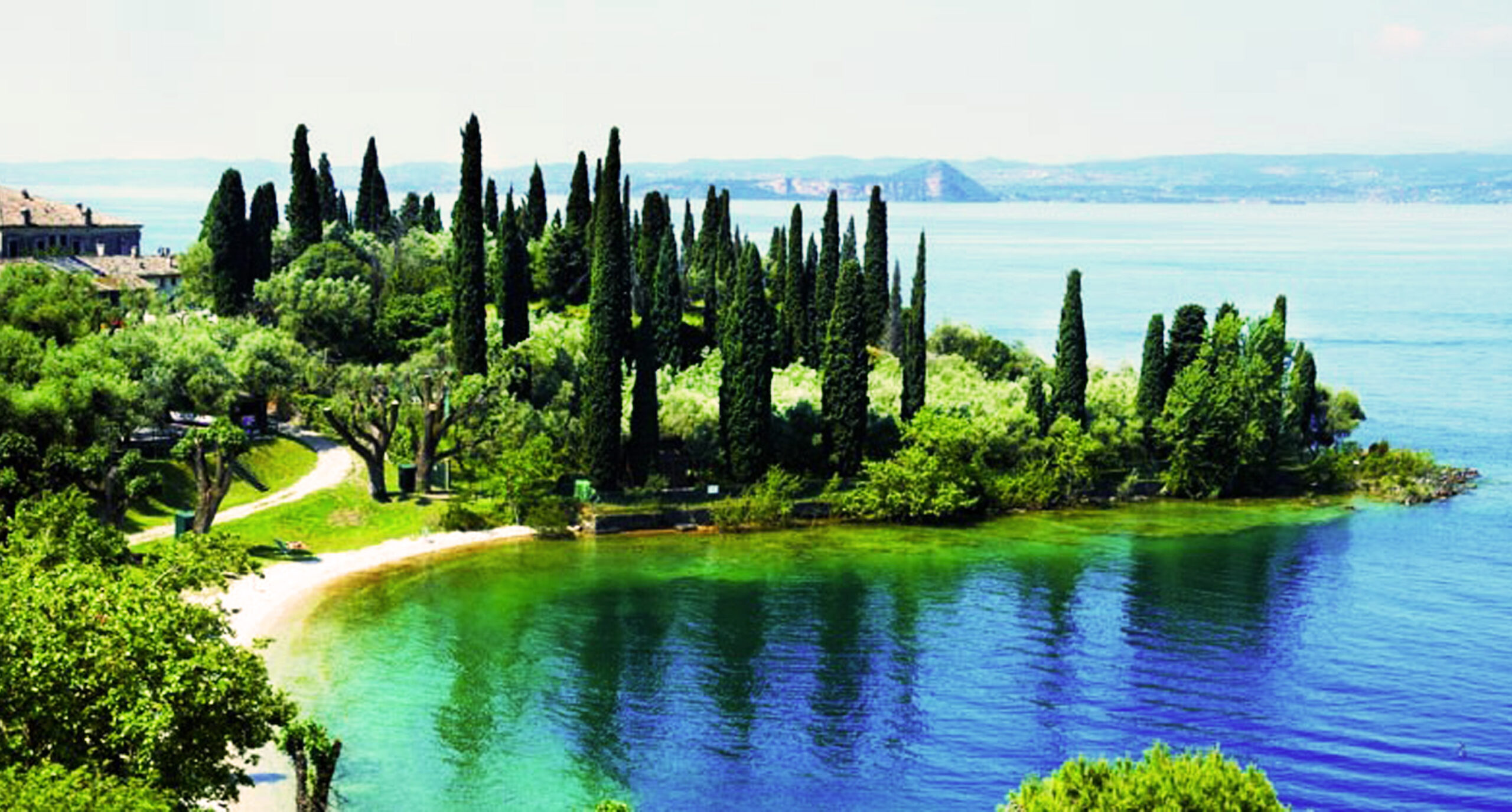Isola del Garda is the largest island on Lake Garda. It is part of the town of San Felice del Benaco in the Province of Brescia. The island has a long and varied history, having been used as a Roman burial ground, a pirate’s lair, the site of a Franciscan monastery, a border fortification and as a residential villa. Over the centuries, the island was visited by numerous illustrious people, including St. Francis of Assisi, St. Anthony of Padua and Dante Alighieri.
Isola del Garda is located in the southwest of Lake Garda and is roughly 3,700 feet long, but only 230 feet wide. In previous eras, it was known as Insula Cranie (Isle of Skulls), where well over 100 Gallo-Roman tombstones can be found, perhaps because of its pirate presence. The isle, which sits about 700 feet off the mainland, was abandoned during the decline of the Roman Empire and for a long period it served as a hideout for pirates who preyed on the shipping on Lake Garda.
The island is first mentioned in written documents in a decree by Duke Carloman of Bavaria, dated 879, which granted the island to the monks of San Zeno of Verona. Around 1220, Francis of Assisi travelled through northern Italy and visited the island and the Franciscans established a simple hermitage among the caves and rocks of the island. In 1224, the Bishop of Trent visited the hermitage, as did Anthony of Padua three years later. In 1304, Dante Alighieri came to the island and later referred to it in his Divine Comedy.
During the 15th century, a Franciscan convent and church were constructed on the island and it continued to serve the religious community until the late 18th century. It passed into private hands, but was reacquired by the newly unified Italian state and turned into a border fortification against the Austrians, who at the time still held the region of Venetia, including the eastern shore of Lake Garda. The idea of a fortification became moot after Austria ceded most of their holdings in northern Italy to the Kingdom of Italy after the Third Italian War of Independence in 1866.
In 1870, the island was sold at auction and purchased by Baron Scotti. He in turn sold it to Duke Gaetano de Ferrari (1818–1893) from Genoa. De Ferrari and his wife, the Russian aristocrat Maria Sergeyevna Annenkova (1837–1924), moved to the island. Between 1880 and 1900 they had the park constructed, built containment walls to keep out the water, imported fertile earth and exotic plants and a constructed a Venetian neo-gothic villa. It remains in the family and is now owned by Lady Charlotte Cavazza. She lives on the island with her seven children and their families. Isola del Garda has been open to visitors since 2001 and is a popular destination for weddings and tours and wine tastings are conducted regularly, often by Lady Charlotte herself.





